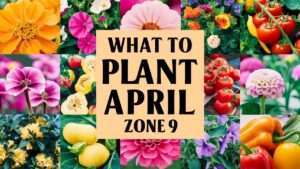Creating a beautiful garden in shady areas can present challenges, especially in colder climates like Zone 4, where winter temperatures can drop significantly. However, the reward is a vibrant and lush garden filled with unique plants that thrive in low-light conditions.
Let’s take a journey into the delightful world of shade gardening, uncovering perennial and annual plants, ground covers, and the complexities of different shade levels. You’ll find plentiful options that will transform your shaded spots into captivating retreats.
Top Perennial Shade-Loving Plants
Hostas
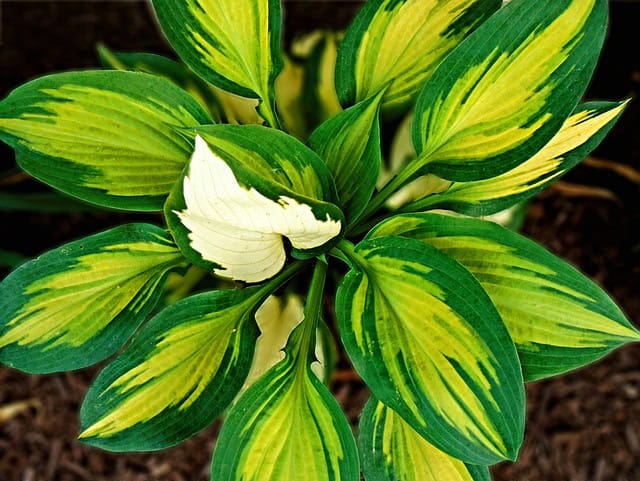
Hostas are often referred to as the “perfect plant” for shady gardens, and it’s no wonder why. Their broad, textured leaves create an impressive backdrop for any garden design, and they offer an incredible range of colors—from deep green to chartreuse, and even blue-hued varieties.
Hostas generally prefer well-drained, rich soil under conditions of minimal light, making them ideal for woodland gardens or spaces under taller plants. Not only are they visually stunning, but hostas are also known for their resilience against pests like deer and rabbits, which tend to avoid their thick foliage. In summer, they burst forth with delicate spikes of lavender or white flowers, attracting butterflies while enhancing the aesthetic appeal of your garden. Pruning back the leaves after the first frost keeps hostas thriving for years, providing a tidy appearance in the winter months.
Bleeding Hearts
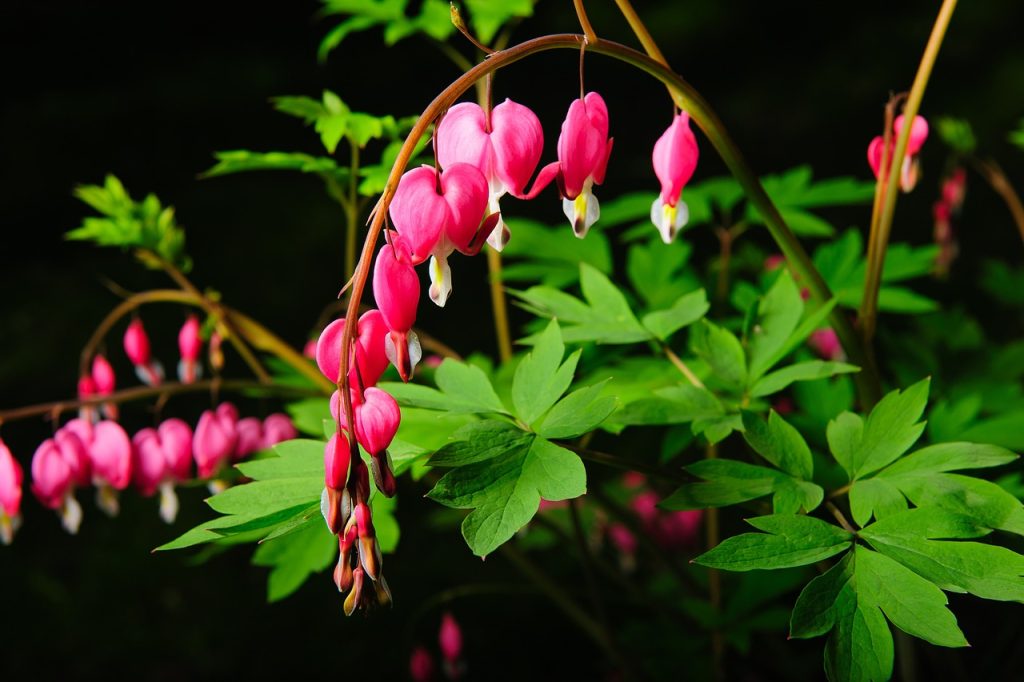
Bleeding hearts (Dicentra spectabilis) are enchanting perennials characterized by their unique, heart-shaped flowers that dangle gracefully from arching stems. They bloom in shades of pink and white, typically in spring and lasting into early summer, providing a soft, romantic feel to shady gardens.
These plants thrive in moist, well-drained soil, preferring a little organic matter mixed in for nourishment. They do particularly well near water features or in borders alongside paths, where their delicate blooms can be appreciated up close. Once the blooming period is over, the foliage remains lush and attractive throughout the growing season, but be sure to cut it back in the fall to allow new growth in the spring. Bleeding hearts are also resistant to deer and rabbits, ensuring your garden stays healthy and vibrant.
Astilbes
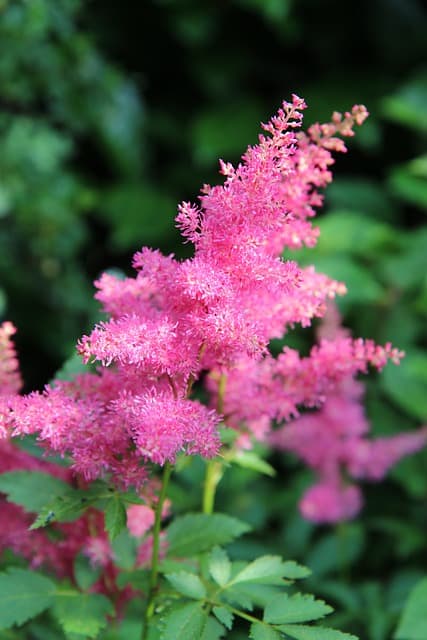
Astilbes are celebrated for their feathery plumes of flowers that bloom in a dazzling array of colors, including shades of pink, red, and white. These plants prefer consistently moist, well-drained soil, making them ideal for areas of your garden that may stay damp.
Astilbes excel in partial to full shade, lighting up those darker corners of the yard while attracting pollinators like bees and butterflies. They serve as excellent backdrops or focal points in shade gardens, with their flowers resembling fluffy clouds and contrasting perfectly against their lush green foliage. To ensure healthy growth, plant astilbes in spring or fall, and incorporate layer mulch to help retain moisture. Their versatility makes them suitable for borders, mass plantings, or even as cut flowers to bring color indoors.
Coral Bells
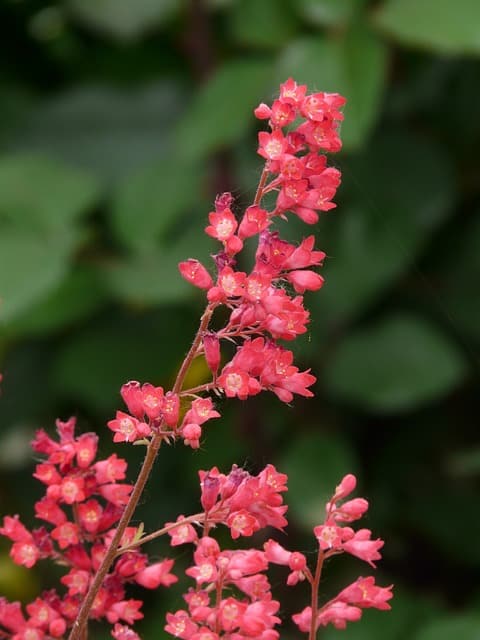
Coral bells, or Heuchera, are increasingly popular for their exceptional foliage. Available in an array of colors including deep burgundy, silver, and bright lime green, coral bells can add a vibrant splash to any shade garden. They bloom in late spring to early summer, producing small bell-shaped flowers on tall spikes that attract hummingbirds and other pollinators.
These perennials prefer partial shade to shade and thrive in well-drained soil rich in organic material. Coral bells are relatively low-maintenance; however, they do benefit from division every few years to maintain their vigor. Mixing different varieties can result in a striking display that changes throughout the seasons, providing continuous color and texture.
Japanese Painted Ferns
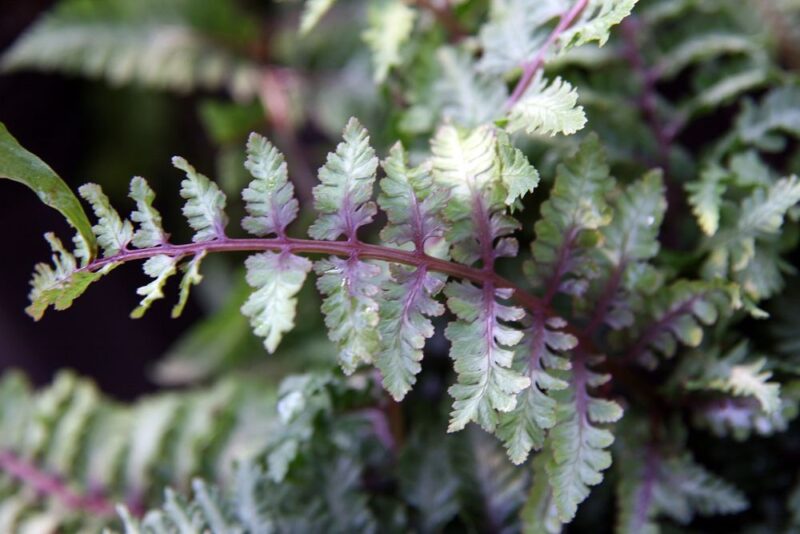
Japanese painted ferns (Athyrium niponicum) are revered for their ornate, silvery-green fronds that can tolerate a range of sunlight conditions from full shade to partial light. Their delicately cut leaves make them a favorite choice for shaded garden beds, providing rich textural contrast against other shade-lovers.
These ferns thrive in cool, moist environments—often feeling at home near water features or in shaded wooded areas. Utilize them to fill in spaces where other plants may struggle, or plant them in mass for a striking natural look. Japanese painted ferns require minimal care, making them perfect for beginner gardeners. They are resilient even to colder temperatures, ensuring they will return beautifully each spring.
Lenten Roses
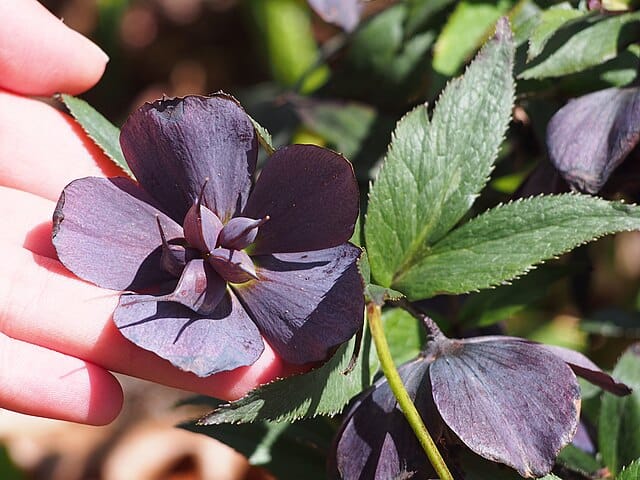
Lenten roses (Helleborus) are perhaps one of the most charming shade-lovers, producing their exquisite flowers as early as February, even when snow still covers the ground. Their thick, leathery leaves are evergreen in many climates, providing year-round interest.
Their blooms emerge in subtle shades of cream, pink, and purple, often lasting well into spring. Lenten roses thrive in moist, well-drained soil and prefer a bit of mulch for winter protection. This perennial plant also holds additional perks; it can tolerate drought once established and has low maintenance needs, making it an excellent addition to your shade garden. With their early blooms, they signal the end of winter and the start of the new gardening season—what a treat for eager gardeners!
Rhododendrons
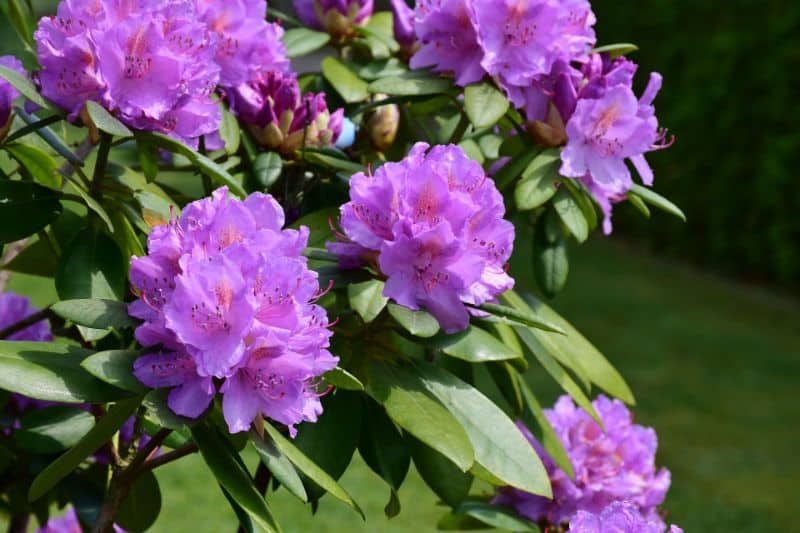
Quickly becoming iconic in gardens, rhododendrons add bold, evergreen beauty to shaded areas. They bloom prolifically in the spring, producing large, showy flowers in various hues like pink, purple, and white. These shrubs can grow quite large, making them perfect for creating a dramatic backdrop or hedge in your garden.
Rhododendrons flourish in acidic, well-drained soil and prefer partial shade, particularly from the hot afternoon sun. Because they have shallow root systems, ample moisture retention in the soil will keep them thriving. They also attract beneficial wildlife such as hummingbirds, further adding to biodiversity in your garden. Use rhododendrons to create a garden corner or focal point that will be a visual highlight year after year.
Columbines
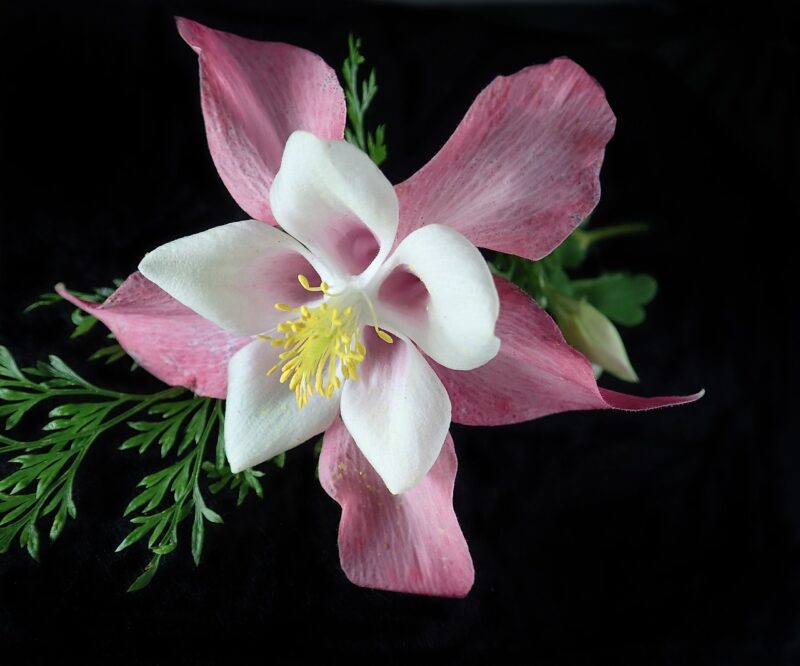
Columbines (Aquilegia) are lovely perennials known for their unique, spurred flowers resembling little fairy bells. These delightful flowers come in a spectrum of colors, often with multiple hues on a single bloom, making them a perfect addition for those wanting a varied garden.
Columbines prefer partial shade and well-drained, rich soil. They are self-seeding, so once established, they’ll add to their numbers over the years. Beyond their visual appeal, they are a favorite among hummingbirds and other pollinators. As the foliage dies back in winter, they can be cut down to prepare for vibrant spring regrowth.
Siberian Bugloss
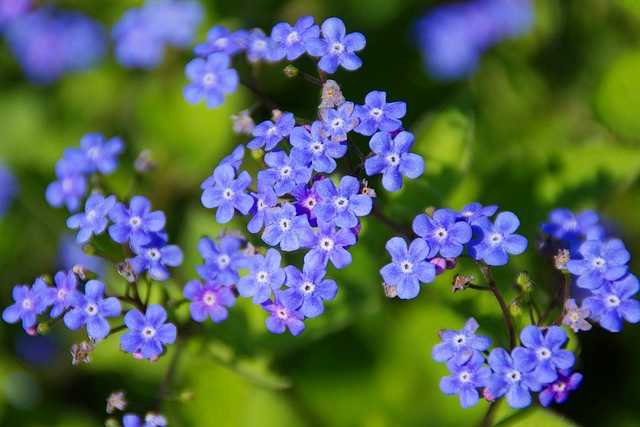
Siberian bugloss (Brunnera macrophylla), sometimes referred to as false forget-me-nots, are fascinating shade garden plants known for their large, heart-shaped leaves adorned with striking silvery spots. In spring, they produce cheerful clusters of small, bright blue flowers, resembling forget-me-nots.
This perennial thrives in rich, moist soil and is renowned for its ability to withstand various shade conditions. Siberian bugloss expands gradually, making it a fantastic choice for ground cover or creating stunning borders. The striking foliage adds depth and visual interest when other blooms have faded, making it a year-round staple in your garden.
Top Annual Shade-Loving Plants
Impatiens
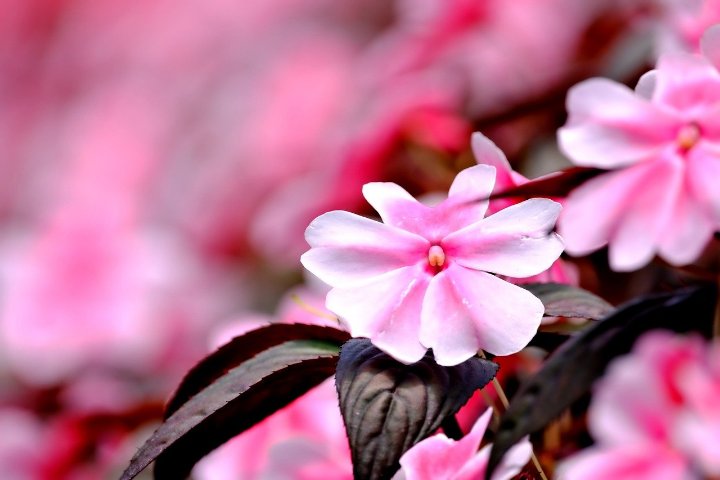
When selecting annuals for shady spaces, few flowers are as agreeable and colorful as impatiens. These widely loved flowers thrive in low light and come in an impressive array of shades, including bright pink, red, purple, and white.
They prefer moist, well-drained soil, making them perfect for window boxes, hanging baskets, or garden beds where they can fill in gaps with a burst of color. Impatiens can bloom heavily from spring until frost, providing continuous color that engulfs dull shadows with vibrancy. Additionally, they are excellent in mass plantings, creating a striking visual impact that can brighten up the darkest corners.
Begonia
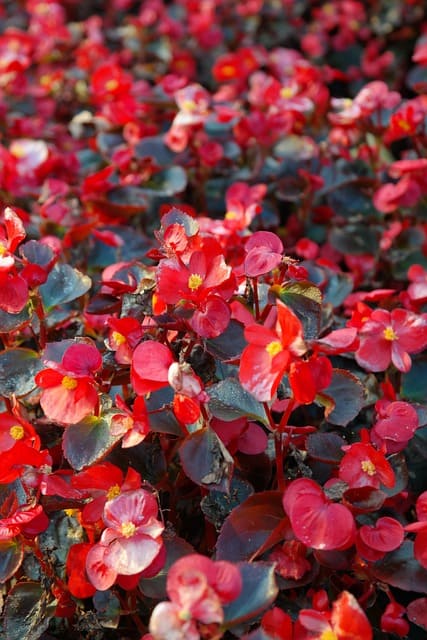
Begonias are another exceptional option for shady gardens, prized for their intricate leaf patterns and dazzling blooms. They are versatile plants, typically growing well in rich soil that retains some moisture but drains adequately.
With countless species and cultivars available, begonias can suit any garden style—whether you prefer the waxy-leafed varieties or the showy tuberous types. Their stunning foliage adds vibrancy and texture, while the flowers create charming pops of color. Because begonias can handle varying amounts of shade and light, they’re ideal for shaded patios or under tree canopies, providing beauty wherever they are planted.
Eastern North American Bluebells
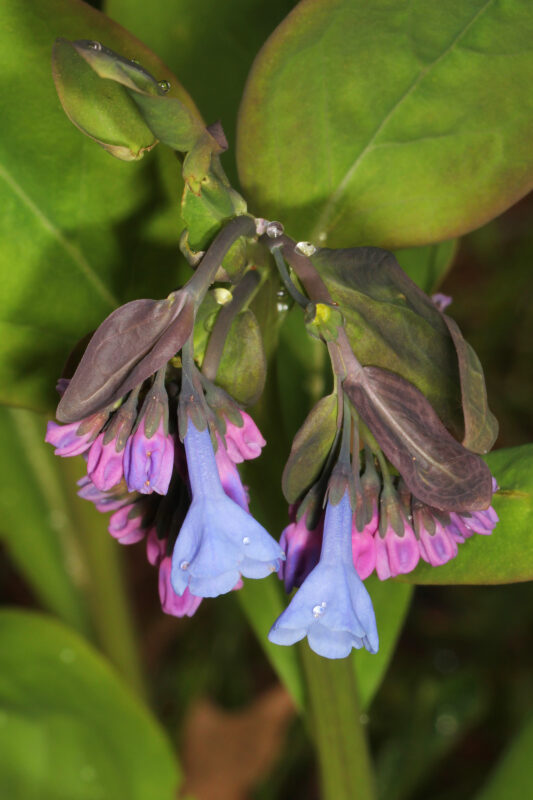
Native to eastern North America, eastern bluebells (Mertensia virginica) are known for their lovely blue, nodding flowers that bloom in spring. This perennial prefers moist, well-drained soil and thrives particularly well in shaded woodland gardens.
The stunning clusters of bell-shaped flowers add an enchanting touch to any shade garden, while their foliage offers a deep green backdrop. Once they finish blooming, the leaves continue to grow, providing texture and interest even after the flowers fade. Eastern bluebells are also attractive to pollinators, including bees and butterflies, making them a great choice for promoting local wildlife.
Calendula
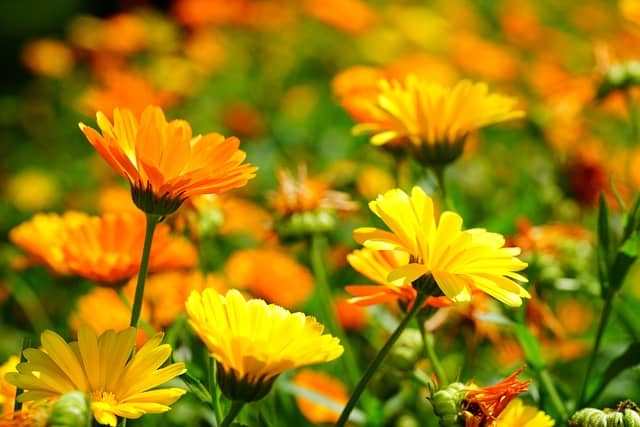
Calendulas are bright, cheerful annuals that can add a splash of sunny color to your shady garden. While they generally prefer full sun, they can also tolerate partial shade, especially during the sweltering summer months.
These flowers bloom from early spring through fall, typically producing colorful daisies in shades of yellow and orange. Aside from their ornamental value, calendulas are also edible and can be used in salads or as garnishes, inviting beneficial insects to your garden. Their cheerful presence can uplift and brighten even the shadiest areas—perfect for bringing joy to every gardener.
Forget-Me-Not
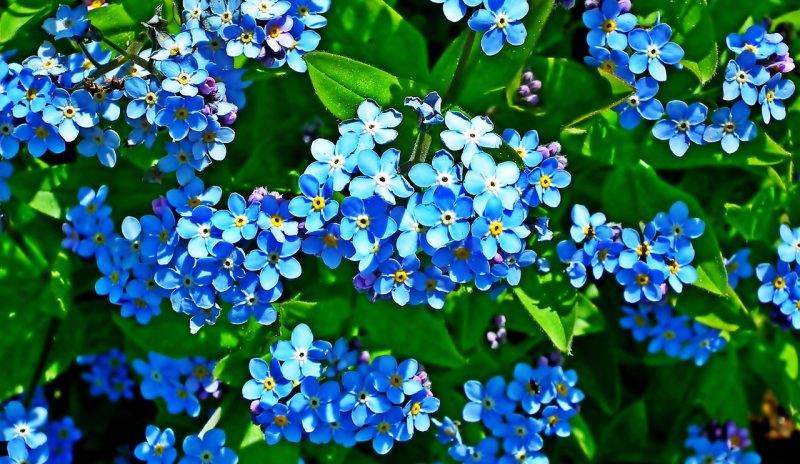
Forget-me-nots (Myosotis spp.) are elegant annuals that conjure images of charming blue blooms. These hardy little plants thrive in partial shade and moist soil, making them well-suited for garden beds, borders, and containers.
They typically bloom in spring, creating an ethereal carpet of blue that can enhance the beauty of adjacent flowers. Forget-me-nots are also known to self-seed, meaning that once established, they could return year after year to reinvigorate your garden. Their sweet blooms and gentle fragrance can create magical moments in the shaded corners of your garden.
Top Ground Cover Shade-Loving Plants
Vinca Minor
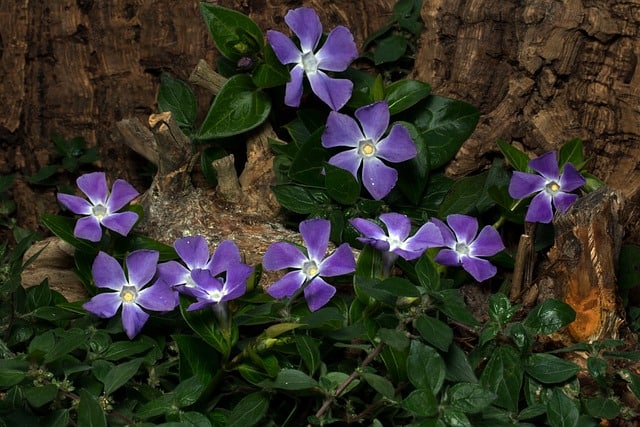
Vinca minor, or periwinkle, is an incredibly hardy ground cover that thrives in shady areas. With its glossy green leaves and stunning blue flowers blooming in spring, vinca adds color and texture to otherwise barren areas.
This resilient plant can spread quickly, making it excellent for covering large areas and suppressing weeds. Vinca minor adapts well to various soil types, but prefers those with good drainage. Use it along paths, under trees, or as a hanging plant in containers, and it can create beautiful visual effects as it spills over the edges.
Bunchberry
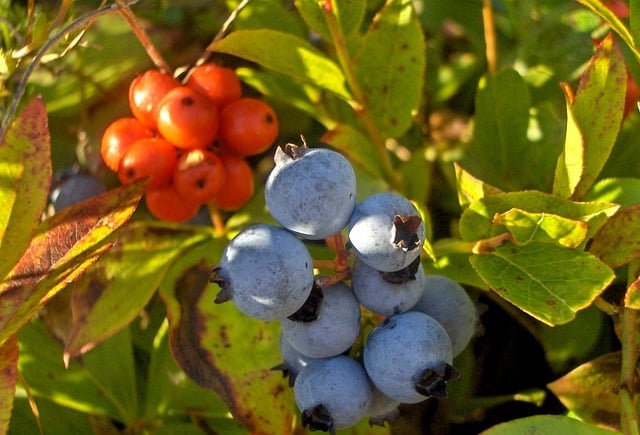
Bunchberry (Cornus canadensis) is a delightful native ground cover that flourishes in shaded woodland gardens. Not only does it produce clusters of delicate white flowers in spring, but it also bears bright red berries in the summer, making it a year-round beauty.
This plant prefers cool, moist conditions, thriving in well-drained soils rich with organic matter. Bunchberry can provide dense ground cover, which can help stabilize slopes and build a natural habitat within your garden. Its appeal to pollinators further enriches the ecosystem, making it a fantastic choice for those seeking native plants.
Moss
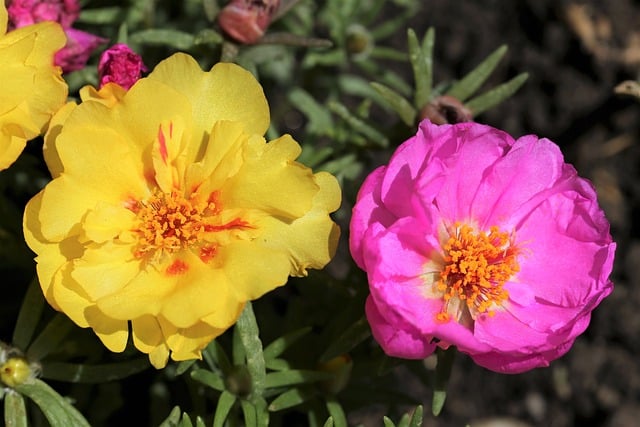
Moss is an often-overlooked yet enchanting addition to any shade garden. Capable of thriving in locations with little to no sunlight, moss creates a soft, verdant carpet underfoot. Its ability to retain moisture makes it an ideal ground cover in shaded areas or in places where grass struggles to grow.
Moss requires minimal maintenance, typically needing only the occasional trim to prevent unwanted weeds. It works particularly well between stepping stones, alongside paths, or in damp, shaded spots. Consider moss as a unique alternative to traditional ground covers, creating an ethereal quality and adding a natural feel to your space.
Coleus
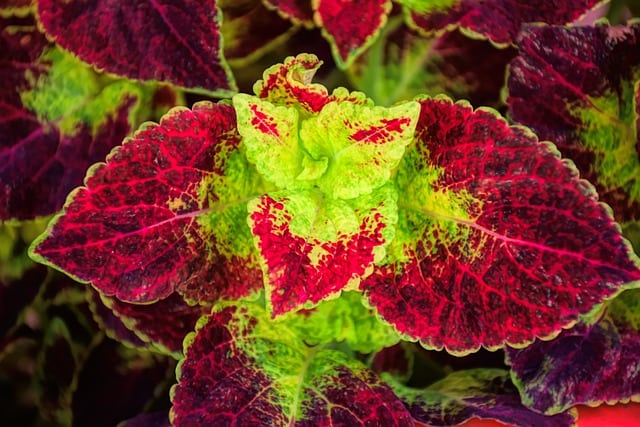
Coleus is known for its stunning, multicolored foliage, making it a favorite for gardeners wanting bold color while shading their spaces. With such a variety of leaf shapes and colors, coleus plants can create vibrant visual drama in any shady corner.
Although typically used as an annual in cooler climates, coleus can thrive in partial shade to full shade with consistent moisture. They work well in containers, hanging baskets, or as border plants. For a striking display, try mixing different coleus colors and patterns, proving that shade does not have to mean dullness.
Japanese Spurge
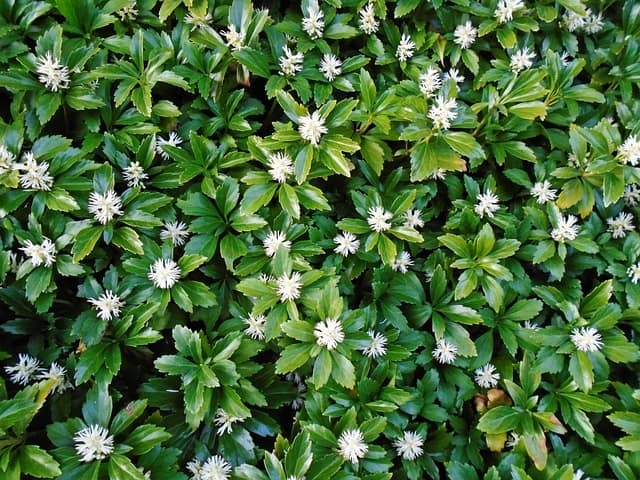
Japanese spurge (Pachysandra terminalis) serves as an excellent ground cover in shady gardens, particularly in areas with mixed shade or dappled sunlight. With its glossy green leaves and minimal maintenance needs, this perennial can create a dense mat that helps suppress weeds.
Japanese spurge grows well in various soil types and can thrive even in dry conditions once established. Although it produces small, white flowers that are understated, its lush green foliage is what provides the main appeal. Create pathways or borders with Japanese spurge; its durability and adaptability make it a reliable choice for minimal care gardens.
Creeping Jenny
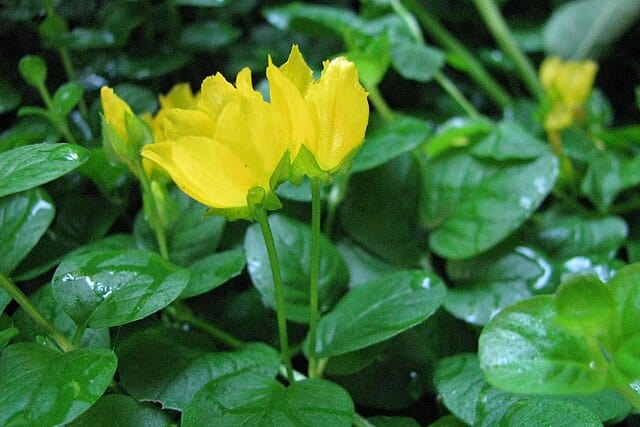
Creeping Jenny (Lysimachia nummularia) is a delightful addition to any shade garden, with its vibrant golden-yellow or lime-green foliage that creates a luminous effect even in the deepest shadows. In late spring to early summer, it produces charming yellow flowers that further enhance its charm.
Creeping Jenny prefers moist soil (though it can tolerate occasional drought) and can adapt to shade or sun, making it a versatile option. It works particularly well in hanging baskets, containers, or as a ground cover cascading down slopes. To maintain its vibrant color, it’s best to plant it where it gets some sunlight, but it’s certainly forgiving.
Understanding Shade Levels
Navigating the different types of shade is crucial in creating a thriving garden. Recognizing these shade levels will help you select suitable plants and cultivate a flourishing landscape.
Full Shade
Areas classified as full shade receive little to no direct sunlight throughout the day. These spaces might experience foot traffic or shadows cast by trees, structures, or more prominent plants. Plants in full shade typically thrive on low light and prefer consistent moisture since the soil tends to stay damp longer. Ideal candidates include hostas, ferns, and bleeding hearts, which can all thrive in these darker corners while adding a stunning aesthetic.
Partial Shade
Partial shade areas get indirect sunlight for a few hours each day, usually in the mornings or late afternoons. Here, the light might filter through tree branches or building overhangs, allowing some plants to flourish while keeping the soil relatively moist. Many flowering perennials like astilbes, columbines, and Japanese painted ferns enjoy these conditions as they benefit from the scattered sunlight while remaining protected from hotter, direct rays.
Partial Sun
Unlike partial shade, partial sun areas receive three to six hours of direct sunlight daily. This comfort level allows for a greater diversity of plants, as they can benefit from some sunlight while avoiding extremes. Seasonal favorites such as begonias and Eastern North American bluebells thrive in these spaces, gaining a vital boost for healthier growth and additional blooms. Understanding this classification will help you make informed decisions by allowing the proper plants to shine in partial sun areas.
Full Sun to Partial Shade
These areas experience more than six hours of sunlight with some parts shaded during the day. Many plants that love sun can adapt to these intermediate conditions, as long as they have access to adequate water and care. Generally, gardeners can mix in sun-loving plants with partial shade varieties—like calendulas and some varieties of impatiens—to create visually intriguing spaces while fulfilling the light needs of different plants.



